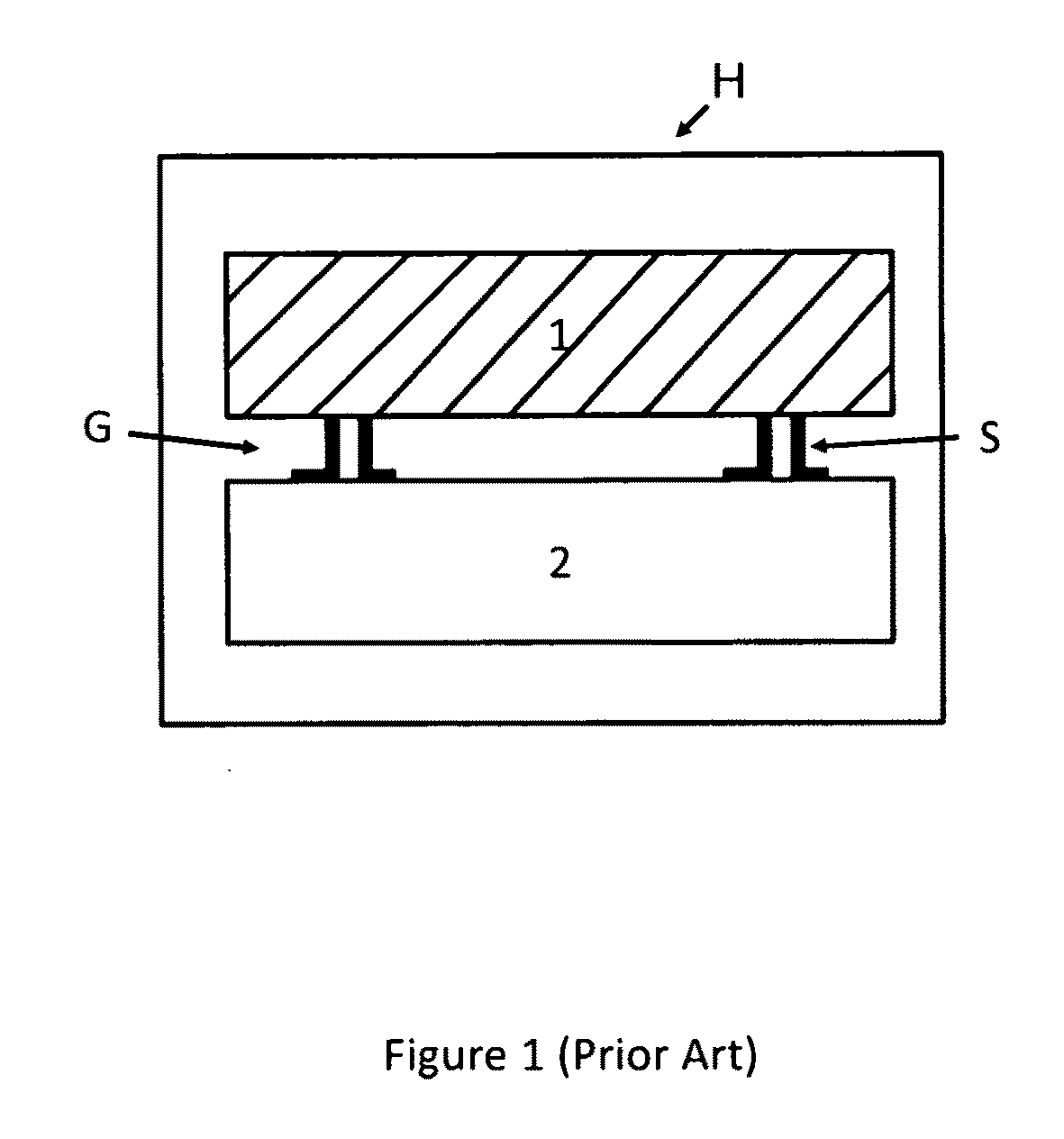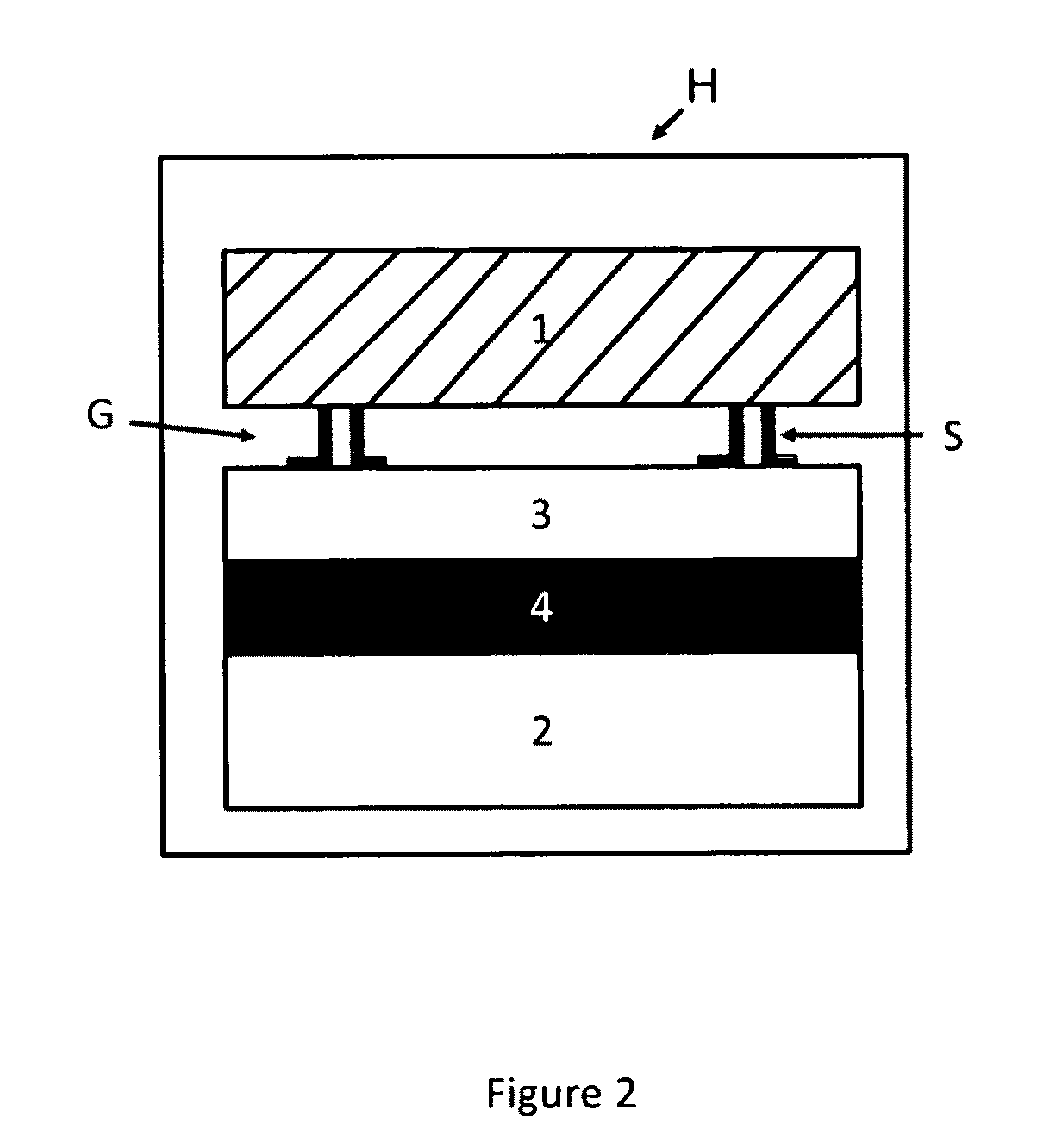Sub-micrometer gap thermophotovoltaic structure (MTPV) and fabrication method therefor
a thermophotovoltaic structure and submicrometer gap technology, applied in the direction of thermoelectric devices, thermoelectric device details, power plants, etc., can solve the problems of reducing the efficiency of heat conversion to electricity, large heat loss from the emitter, and phonons or non-radiated energy carriers are sources of inefficiency, so as to achieve precise and uniform gap dimension setting, the effect of reducing the fabrication cos
- Summary
- Abstract
- Description
- Claims
- Application Information
AI Technical Summary
Benefits of technology
Problems solved by technology
Method used
Image
Examples
Embodiment Construction
)
[0017]Referring to the drawings, a sub-micrometer gap thermophotovoltaic device is shown on an enlarged and exploded fragmentary schematic view, including a photovoltaic cell layer or substrate 2, a juxtaposed heat or infrared source emitter chip 1, at least one and preferably an array of spacers S located between the emitter chip 1 and PV cell 2, and a gap of sub-micrometer separation labeled G maintained by the spacers. The spacers may be disposed upon either the emitter chip 1 (“hot side” spacers) or PV cell 2 (“cold side” spacers).
[0018]While conventional TPV systems involve conversion of infrared light emitted by a blackbody into electricity via the use of photovoltaic (PV) cells, MTPV systems utilize a preferably sub-micron evacuated gap between the (“hot side”) emitter and the PV cell (“cold side”) to achieve enhanced radiative transfer as compared to conventional far-field TPV systems, as earlier mentioned.
[0019]There are, however, several challenges in the manufacturing of...
PUM
 Login to View More
Login to View More Abstract
Description
Claims
Application Information
 Login to View More
Login to View More - R&D
- Intellectual Property
- Life Sciences
- Materials
- Tech Scout
- Unparalleled Data Quality
- Higher Quality Content
- 60% Fewer Hallucinations
Browse by: Latest US Patents, China's latest patents, Technical Efficacy Thesaurus, Application Domain, Technology Topic, Popular Technical Reports.
© 2025 PatSnap. All rights reserved.Legal|Privacy policy|Modern Slavery Act Transparency Statement|Sitemap|About US| Contact US: help@patsnap.com



